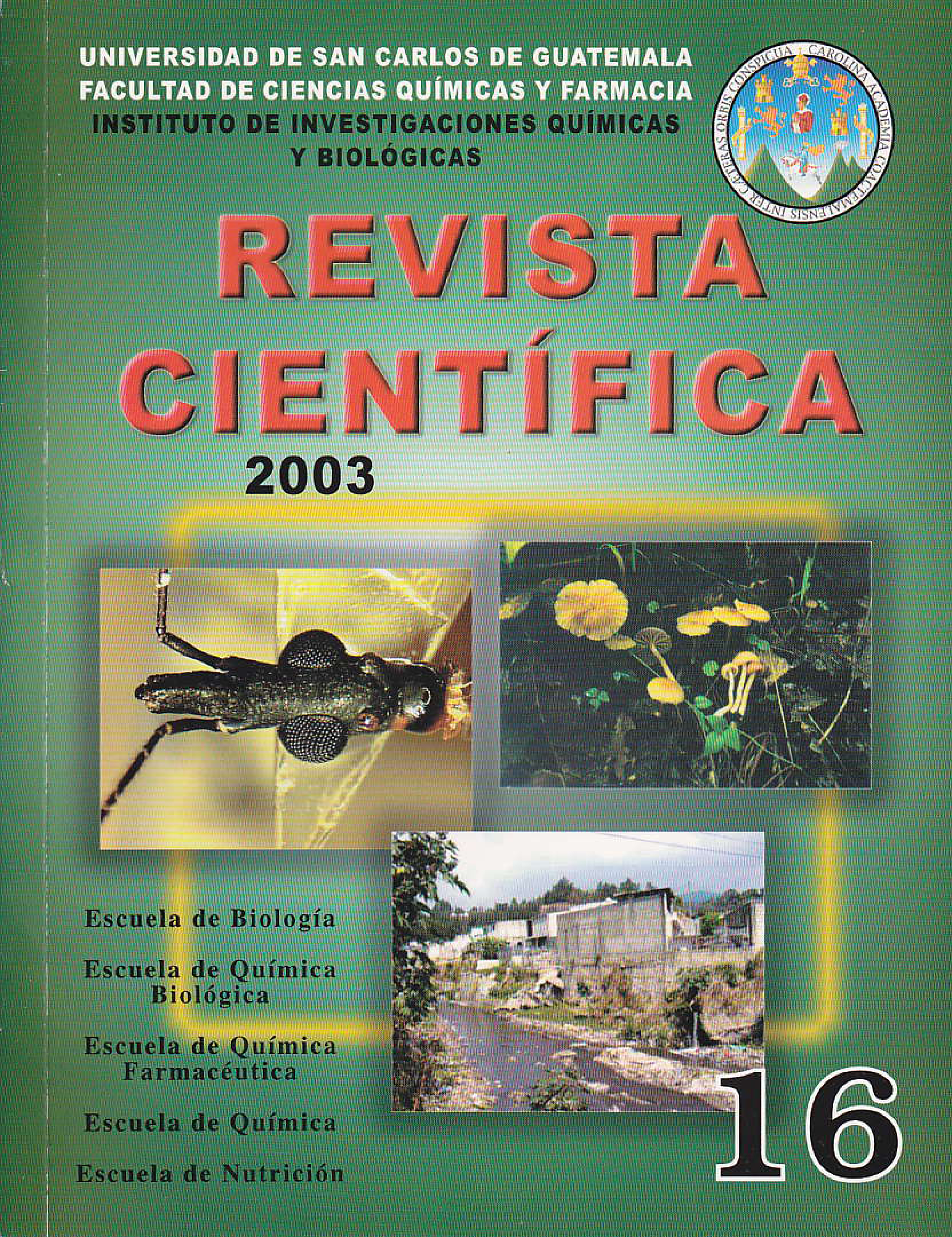Monitoring and Quantification of Total Coliforms, Fecal Coliforms and Escherichia Coli, in Seven Micro-basins of Lake Amatitlán
DOI:
https://doi.org/10.54495/Rev.Cientifica.v16i1.235Keywords:
Monitoring, Qualification, Total coliforms, Fecal coliforms, Escherichia Coli, Lake AmatitlánAbstract
Monitoring and diagnosis of the current situation of bacterial contamination was carried out in seven micro-basins of Lake Amatitlán (San Lucas River, Zanjón La Palín, Zanjón El Zacatal, Quebrada del Frutal, Chanquín River, Pinula River and Guadrón River). Biological indicators associated with fecal matter, such as the coliform group, were used. The quality of the existing water in the micro-basins was analyzed and quantified for total coliforms, fecal colliferomes and Escherichia coli. The procedure used for the initial isolation was the Most Probable Number (MPN) method. These results were confirmed with specific culture media and biochemical tests for fecal coliforms and E. coli. The samples were taken in the areas that are considered to be the most contaminated of the micro-basins, in the dry season and the rainy season. The water samples analyzed, corresponding to both seasons, did not show a significant statistical difference (p > 0.05) in the Most Probable Number. The high concentrations of coliforms and Escherichia coli were far from the standard for the quality of drinking water according to the COGUANOR standard of NMP < 2/100 mL, this is the only one available in the country on water and it was considered that it can be used for human consumption. With the beginning of the rainy season, the NMP for total coliforms and E. coli decreased, while for fecal coliforms a slight increase was observed. The micro-basin with the highest concentration was the Zanjón la Palín, with MPN values between 3.5 x 1010/100 mL and 7.9 x 1010/100 mL, and the Chanquín River with the lowest degree of contamination, which recorded MPN values of 3.3 x 104/100 mL. and 2 X 102/100 mL, although the high concentrations of total coliforms, fecal coliforms and E. coli quantified revealed that no micro-basin is suitable for developing any activity in them, whether recreational or agricultural. With the results obtained, it was clearly observed that there was discharge of wastewater to the micro-basins, and the contribution in this way to the eutrophication of the Basin and Lake Amatitlán. These findings were confirmed and correlated with the measurement of physicochemical parameters carried out simultaneously by the Authority for the Sustainable Management of the Basin and Lake Amatitlán (AMSA) in the micro-basins.
Downloads
References
Basterrechea M. Década e Estudios Limnológicos 1985-1 995. Guatemala: Academia de Ciencias Médicas. Físicas y Naturales de Guatemala. 1997. 42p. (p.1-20)
Quiroz J. Análisis Económico de la Contaminación de Aguas en América Latina. Chile: Centro Internacional para el Desarrollo Económico (CINDE), 1995. 44p. íp.38 1-426)
Comité del Lago de Amatitlán y Yo. ed, Guatemala: Comité del lago de Amatitlán. 1988. Vll+77p. (p.11-37)
Cano F, Quán N. Técnicas de Análisis Microbiológico de Alimentos y Agua. Guatemala: Instituto de Nutrición de Centro América y Panamá (TNCAP), 1995. 40p. (p.8-27)
Me. land, Greenberg AE, Taras MJ, Standard Methods for the Examination of Water and Wastewater. 14 ed. Estados Unidos: American Public Health Association, 1975. (p.904-907)
Pepper I, Gerba CP, Brusscau ML. Pollutii Science. Canadá: Academic Press, 1996. (p.12 126)
Organización Panamericana de la Salud. Guía para la Calidad del Agua Potable: Criterio Redativos a la Salud y otra Información de Base Estados Unidos: Organización Mundial de Salud Vol. 2, 1987. 372p. (p.3-7)
Herrera, KL. Indicadores Biológicos de Calidad del Agua del Río Polochic y de Integridad Biológica del Lago de Izaba Guatemala: Universidad del Valle de Guatemala (tesis de graduación. Facultad de Ciencias Humanidades Departamento de Biología) 1999. 96p.
Roldan G. Fundamentos de Limnologia Neotropical . Colombia: Universidad de Antioquia, 1992. (p.467-479)
Downloads
Published
How to Cite
Issue
Section
License
Copyright (c) 2003 P. Gil, K. Herrera

This work is licensed under a Creative Commons Attribution 4.0 International License.
Authors who publish with this journal agree to the following terms:
- Authors retain copyright and grant the journal right of first publication with the work simultaneously licensed under a Creative Commons Attribution License 4.0 that allows others to share the work with an acknowledgement of the work's authorship and initial publication in this journal.
- Authors are able to enter into separate, additional contractual arrangements for the non-exclusive distribution of the journal's published version of the work (e.g., post it to an institutional repository or publish it in a book), with an acknowledgement of its initial publication in this journal.
- Authors are permitted and encouraged to post their work online (e.g., in institutional repositories or on their website) prior to and during the submission process, as it can lead to productive exchanges, as well as earlier and greater citation of published work.









